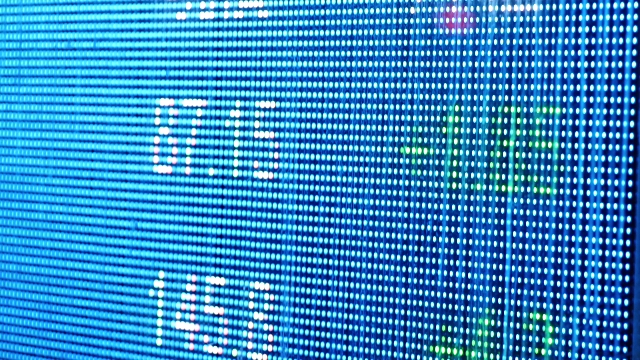
Paul Krugman doesn’t care much for hard-money types or countries that employ hard-money monetary regimes. Argentina is one of his favorite targets because it has operated with a currency board-like system for nearly a decade. Under that set-up, the Argentine peso is fully backed by U.S. dollar reserves and trades freely at a fixed 1-to-1 rate with the greenback. The fact that Argentina is in a temporary slump provides Prof. Krugman and like-minded folks plenty of grist for their mills. Fine. But readers should beware. There is a lot of grist that is missing in action.
For example, the currency board critics love to invoke John Maynard Keynes to assist in making their case. As they tell it, Keynes always favoured central banks and discretionary monetary policy as a means to avert business cycles. While digging through the British Foreign Office archives, Kurt Schuler and I discovered that this assertion is simply untrue. When troops from Britain and other Allied nations invaded north Russia in the waning days of World War I, they found a chaotic local currency environment. The Russian civil war had begun, and every party to the conflict was issuing its own near-worthless local currency. There were more than 2,000 separate issuers of fiat rubles. Trade was difficult because few people would accept fiat rubles in exchange for goods and services.
To facilitate trade with the local population in north Russia, the British established a National Emission Caisse for the area in 1918. The Caisse issued “British ruble” notes, backed by British pounds sterling and convertible into pounds at a fixed rate. As we document in our book, Russian Currency and Finance (1993), this currency board was the handiwork of none other than John Maynard Keynes.
So much for Keynes. What’s missing from the Argentine story? Perspective! Carlos Menem was first elected president of Argentina in 1989 and completed his second term in 1999. Shortly after I first met Mr. Menem in late 1989, and with encouragement from Congressman Jose Maria Ibarbia, Kurt Schuler and I began work on a comprehensive blueprint to stabilize Argentina’s currency. The plan, Banco central o caja de Conversion?, was completed in 1990 and eventually was published in Buenos Aires in 1991. It provided the road map for Argentina’s currency board-like system, which was installed on April 1, 1991.
And how did the Argentine economy fare during the Menem decade? As Table 1 shows, Argentina responded with a growth spurt that left its neighbours in the dust. All this is not an anomaly. Since 1950, countries with currency boards have realized average GDP growth per capita that is 54% higher than comparable countries that had central banks with discretionary monetary powers.
This is not to say that a sound currency is everything. Indeed, Argentina desperately needs a good dose of supply-side economics. Unemployment is high because labour market regulations are burdensome and taxes are too high and complex. Bring on deregulation and a flat tax. Clone Hong Kong, please. And that’s not all. The government apparatus needs a complete overhaul. The only way to attack the endemic corruption spawned by the state is to shrink it. Those reforms, on top of its sound money, would put Argentina back on a high-growth track.
How well do currency boards do in a crisis? The most interesting recent big crisis was the Asian fiasco. With the collapse of the Thai baht in mid-1997, the entire region entered an economic maelstrom. Excepting Hong Kong, which has a currency board, all the other countries in Southeast Asia have central banks that employ discretionary monetary policies. Those central banking countries allowed their currencies to float. And as Table 2 shows, float they did. Downward.
Consequently, their economies took heavy hits. There’s no denying that the worse the devaluation, the worse the economic devastation. Indonesia suffered the most. Some said the poor, at least, were insulated from the problem. Hardly. Local price run-ups hurt the poor the most.
As the storm in Asia raged, Hong Kong was able to mitigate the damage better than its neighbours did. Moreover, Hong Kong has come roaring back with much more vigor than its neighbours. Indeed, during the first quarter of 2000, its real GDP rose by a whopping 14.3% over the previous year.
All these facts have not gone unnoticed by the cognoscenti in Washington. They have become friendly to the currency board idea and its close cousin, “dollarization.” Unfortunately, the central banking pundits continue to ply their wares with lots of information missing in action.
| Table 1 MERCOSUR COUNTRIES: In U.S. dollars, 1989-1999 |
|
| Country | Change in GDP per capita |
| Argentina | 230.3% |
| Uruguay | 135.3% |
| Chile | 114.3% |
| Bolivia | 41.1% |
| Paraguay | 36.6% |
| Brazil | 7.7% |
| Source: Steve H. Hanke | |
| Table 2 SIAN COUNTRIES: In U.S. dollars, 1996-1999 |
||
| Country | Exchange Rate | Change in GDP v. U.S. dollar per capita |
| Hong Kong | -0.5% | -5.6% |
| South Korea | -26.0% | -18.4% |
| Thailand | -31.6% | -30.8% |
| Malaysia | -33.5% | -28.6% |
| Indonesia | -66.4% | -35.5% |
| Source: Steve H. Hanke | ||
Author Steve H. Hanke

0 responses on "Currency Board Critics Cite Selective Facts"